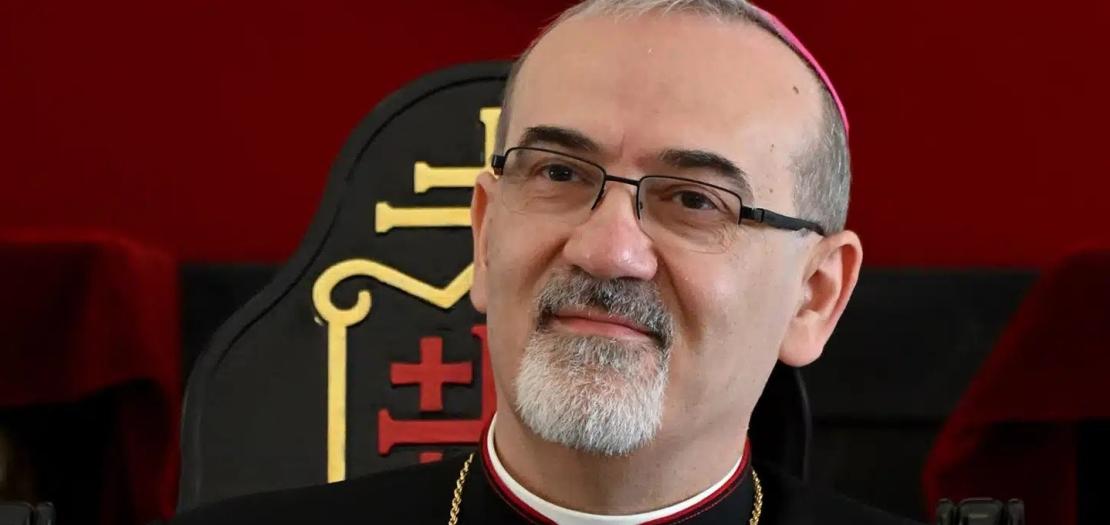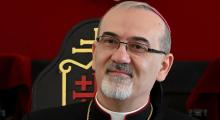Issued by the Catholic Center for Studies and Media - Jordan. Editor-in-chief Fr. Rif'at Bader - موقع أبونا abouna.org

The second to last day of the congress opened with a panel dedicated to a topic deeply felt by the commissaries, communication.
Knowing how to communicate the Holy Land, the mission of the Franciscans of the Custody, knowing how to highlight the stones as much as, if not more than, the sacred stones.
Communicate to pilgrims what to expect from their journey, spirituality, places, people to meet. All this requires a great ability on the part of the Custody of the Holy Land to know how to go outward, toward the commissaries, benefactors, believers from all over the world.
Today this happens through the different channels of the Custody (Christian Information Center, Christian Media Center) and the official website of the Custody, where anyone can find constant updates from the Holy Land, with testimonies, photos, event reports, articles on celebrations and more. Constant updating that requires time and work in order to be improved and to keep up with the times.
These are only some of the themes addressed by Fr. Alberto Pari, custodial secretary, during the morning meeting dedicated to the communication of the Custody, the tools available and the challenges for the future.
The communication of the Custody
Fr. Alberto, also responsible for the communication of the Custody, illustrated to the commissaries the tools at their disposal to communicate the Holy Land to their communities, to pilgrims, to the faithful. First of all the website, custodia.org, where news, testimonies, celebrations in the holy places, statements of the heads of the Churches, updates on the Custody calendar and much more are uploaded almost daily.
In addition to this, the social channels of the Custody, especially Instagram and Facebook, as well as the biweekly newsletter and other communication channels. For example, magazines available in 5 languages, the Christian Media Center with live streaming and video news.
Finally, all the tools made available to the commissaries in order to best organize meetings in preparation for pilgrimages, provide updates on initiatives funded with the Good Friday collection, announce the Holy Land and the Custody in the world. Photos, videos, news, information on the formative and vocational activities of the Custody.
For this reason, we also invite readers to follow us on the official channels of the Custody of the Holy Land to stay updated:
"New Itineraries in the Holy Land"
Silvano Mezzanzana then continued the morning by illustrating a project, already active and ready to be explored, relating to alternative itineraries for discovering the Holy Land.
Trekking along different biblical or historical routes. Routes suitable for everyone, but also daily routes, which pilgrims or tourists can include in their trips to the Holy Land.
All information relating to the routes is available on the project website and by downloading the app, both available in several languages.
Starting over as pilgrims of peace: voices, insights and challenges from the Holy Land
The listening session dedicated to the theme of pilgrimage in the Holy Land offered a deep and concrete look at how this experience can be rethought in the present time, marked by crises and transformations. Through the contributions of Fr. Francesco Cavallini, SJ, and Fr. Carlos Molina, OFM, reflections emerged that intertwine spiritual dimension, social reality and pastoral responsibility.
A pilgrimage that is born from the Land
Fr. Francesco Cavallini retraced the intuition born in the 1960s with the Dominican Jacques Fontaine, who was the first to propose a new way of making a pilgrimage, not only visiting the sanctuaries, but letting oneself be guided by the Land as a place of revelation.
On this basis, Father Rossi De Gasperi — Italian friar and historic guide in the Holy Land — developed a path that unites biblical geography and Ignatian spiritual exercises.
The pilgrimage thus becomes a physical and sensory experience (desert, oasis, water, journey), meditation guided by spiritual stages (creation, sin, mercy, discipleship), an encounter between word and landscape, from the Red Sea to Galilee and finally to Jerusalem.
Fr. Cavallini stresses a necessity, to return to living the places with slower rhythms, prioritizing meditation over racing through obligatory stages. The early closure of sanctuaries and logistic rigidities often prevent this depth, but the experience shows that a more interior pilgrimage is possible and requested.
Crisis as a turning point: the account of Fr. Carlos Molina, OFM
Fr. Carlos Molina, member of the pilgrimage commission and for years responsible for hospitality in Nazareth and on Mount Tabor, realistically describes the impact of the latest crisis that began in October 2023.
For the first time: states and embassies discouraged and obstructed travel, pilgrimages almost completely stopped, the Custody found itself facing a vacuum heavier than the pandemic.
The result was dramatic, especially for the local population:
- between 60 percent and 75 percent of families live directly or indirectly from tourism
- many Christians lost their jobs or working hours
- young people trained as guides found themselves without prospects
Yet not everything stopped.
With courage, Asian groups, particularly from Indonesia, reached the Holy Land by passing through Jordan and Egypt, even on foot; the sanctuaries remained open, even if with reduced hours; an unexpected climate of interreligious dialogue was born, especially in Galilee.
Fr. Carlos recounts simple but eloquent episodes: Muslims who give thanks because the few pilgrims also support their activities, Protestants who pray in Catholic sanctuaries leaving generous offerings, communities that discover they are closer than they thought.
The crisis, he says, also changed the outlook of the State of Israel toward local Christians, recognizing their specificity and their role as a bridge.
The Eucharistic celebration
After the group work, where the commissaries continued discernment and discussion on the themes addressed in the meetings in the Immaculate Hall, the friars of the Custody and the commissaries of the Holy Land gathered in the Church of Saint Saviour for the Eucharistic celebration, presided over by Cardinal Pizzaballa.
In his homily, Cardinal Pizzaballa states that "Jerusalem is never only a place, it is a calling" and offers a profound reflection on the mission of the Commissaries, reread in the light of the biblical figures of Daniel and the widow of the Gospel. Two accounts distant in time, but very close to Christian life today.
The image of Daniel deported to Babylon is not only a biblical memory, it is a key to understanding the present. In a time of uprooting and forced assimilation, Daniel does not allow himself to be shaped by the dominant culture, but "decides in his heart" to remain faithful to his identity.
He does not protest, he does not isolate himself, he does not fight in opposition, discernment, dialogue and integrity become the instruments of his resistance.
The homily recalls that Christians of the Holy Land, today as then, live fragility and pressures. Yet their witness is a beacon, the Custody does not defend only places, but a living memory capable of building bridges between different identities (Jewish, Christian and Islamic) that together make Jerusalem complete.
The Commissaries, spread throughout the world, participate in this task, not allowing themselves to be assimilated by the logic of society, but bringing into the world the logic of the Gospel, of presence and proximity.
In the Holy Land this message can be touched with one’s hands, the Custody continues to live thanks above all to the simple offerings of the faithful. They do not come from great benefactors, but from families, parishes, elderly people who choose to share the little they have, transforming a humble gesture into a bond of communion.
In this context the Commissary takes on a precious role, becoming a living bridge between the Churches of the world and Jerusalem, guarding the trust of the smallest and knowing how to recognize the hidden love that often makes no noise but sustains everything.
His service is not reduced to an administrative task, it is a true evangelizing ministry, capable of bringing Christ into the concreteness of the places where he lives and works, making the closeness of the Church visible through the delicacy of gestures and the depth of listening.
A faithful heart, a poor heart, a wise heart, in this way the Custody will continue to sustain not only a land, but the living memory of the Incarnation.
Because Jerusalem is not only a geographical destination, but the land where God has walked and continues to walk through us.







